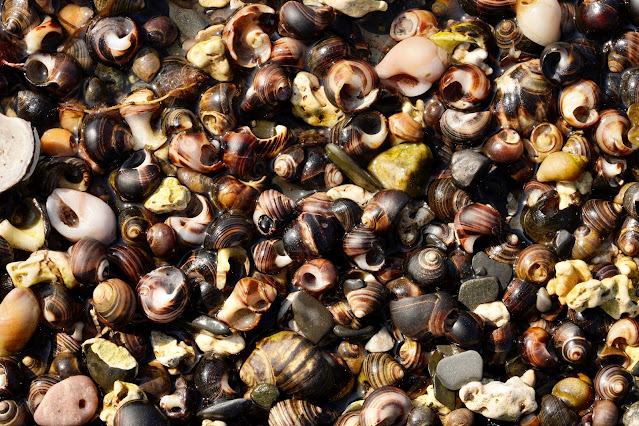Tide Pools! Three Cool Things
When I was in grade 6, I did a project about tide pools. I still have it. Ever since then, when I thought of tide pools, I imagined them crawling with all sorts of colourful creatures like starfish, sea urchins, anemones, crabs, and so on. And maybe some of them are like that. But the tide pools I have seen here at Gros Morne are too warm for that kind of showy sea life because the ones I can access are close to shore. The tide pools I have seen here are about the little things, the less showy, the resilient, and the fascinating.
Periwinkles and Whelks
Everywhere I go, I see the empty shells of periwinkles and whelks. They are abundant in tide pools. Periwinkles mostly eat algae, although they are omnivorous. They have a rough tongue called the radula that they use to scrape the algae off of rocks. They are not native to North America but don't tell them that. They thrive in our waters and they are edible. Don't think I'll sample them, though. Click here to read more about periwinkles.
Whelks, on the other hand, are carnivorous. They use their radula to bore holes in mussel shells, for example, to get at the delicious meal within. The dog whelk is abundant around here. Whelks are also edible. There are a couple of interesting sites that talk about whelks. This one even has a word find puzzle, in case you are bored. This site, https://animalia.bio/dog-whelk, which doesn't have any puzzles, talks specifically about the dog whelk.
Side Swimmers
A worm that looks like a scrub brush
I don't have any useful information to report on this worm that we found. It was about 1 cm long. It is likely a scale worm. I just think this thing is cool, so I want to show you.

.jpeg)





Comments
Post a Comment